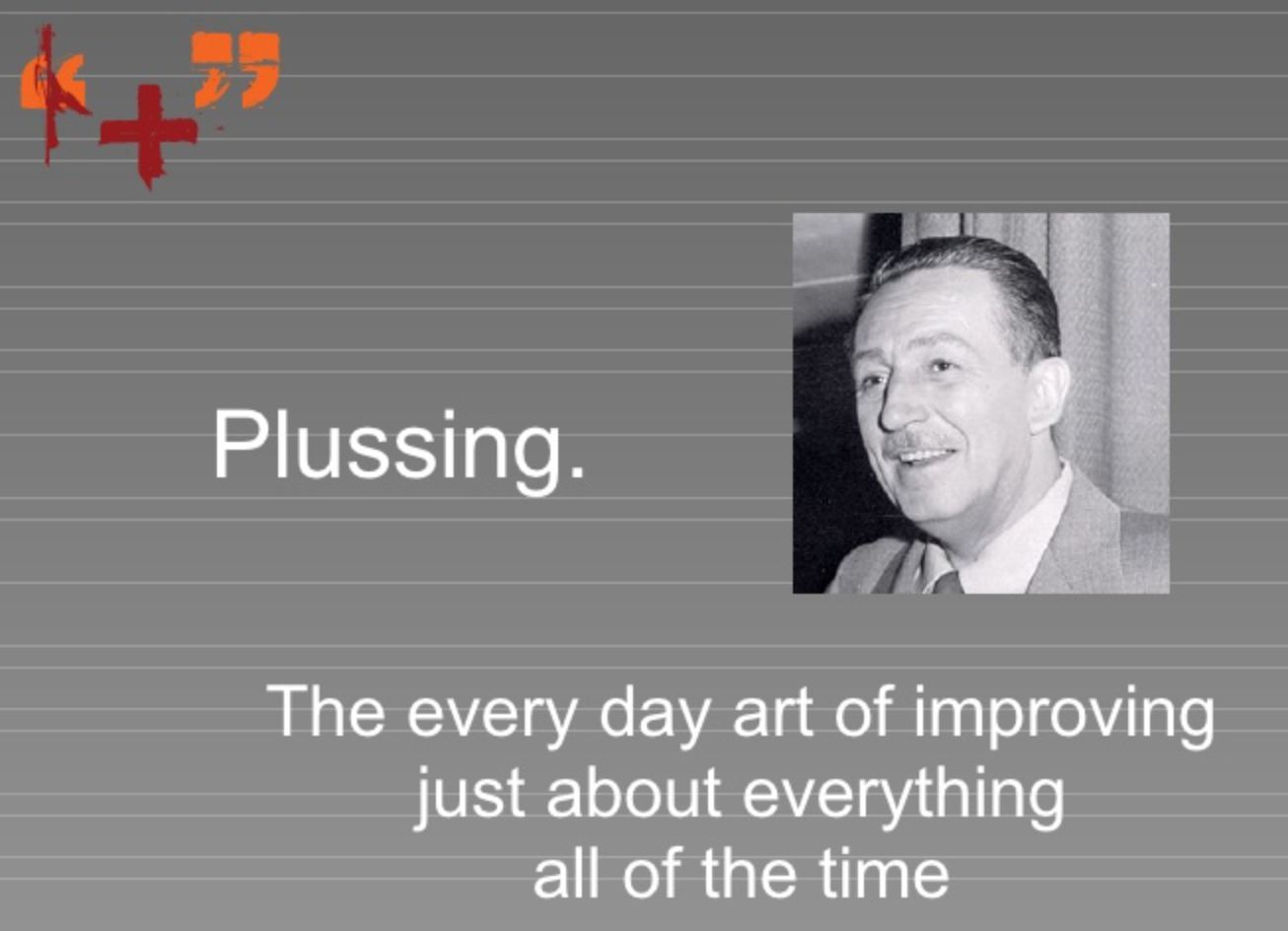
Here are the ten key pointers heralded by Ali Johnson, the Methodist Church’s Digital Evangelist, for the way forward with the digital presence the church. His video is attached at the bottom of this post – I merely wish to highlight their ten key points and add my own reflections.
I’ll explain the ‘Plussing Disney Style’ comments later!
Consolidate
Keep the material we use short and sweet. Here we are not simply translating from the off line traditional format to an on line presence. This is new territory where the soundbite is ‘king’, where the message needs to be heard, not dismissed with a flick of click of the mouse. This is all about not merely translating but transforming our message of Good News.
Adapt.
Here, Ali speaks of the Disney model of Plussing.
Plussing is about finding what’s good about an idea, making subtle suggestions, building on the sound things that are already within the concept, and making it even better by propelling continuous improvement.
From https://engineering.aweber.com/plussing-learning-and-working-in-a-collaborative-environment/
This might take some time as we are not translating but transforming the format we have become so used for centuries. Heidi Campbell has edited a superb digest of comments, entitled ‘The Distanced Church – Reflections on Doing Church Online” relating to transforming the digital presence for churches; I’d particularly commend her own essay (pp49-52) of this work.
Intimate
We are no longer at the back of the Church. We now can see the person, and to make that contact, secure that engagement, we need to see them. It is important that we get all of the signals available from our facial mannerisms. Also, and I have heard this in Zoom services, it is great as people can see that you are talking to them: directly to them. That message is so powerful, personal and even intimate. People need intimacy given the recent lockdown.
Recall how odd it is when the newscaster on TV speaks to the wrong camera.
Attract.
We have, according to Ali, about 4 seconds to get people’s attention. As a teacher I know how it can be if we don’t get the pupil’s attention immediately. We need to grip them – yes, I know that this isn’t entertainment but we do want people to hear the good news. Impact, variety and and that consolidation is key to keep people’s attention.
Equally, just because we are separated/connected through the power of the Internet, the importance of participation is also evident. I have spoken about ‘Chatting In Church‘ before: why can’t people chat online about what is being said during the service? Recall this isn’t a copy of the traditional offline service: this is not merely translating but transforming how we operate.
Think beyond the Live Stream.
If Worship is the only point of meeting up together, then we may be missing the point of community – koinonia. If we are seeing engagement then why can’t we see this extended into WhatsApp/Zoom/GoogleMeet (take your choice) home groups? I’d also suggest that when considering that we can ‘return to normal’ … the hybrid format of both off-line and on-line provisions and presence can still be effective.
Holly Adams, from the same Methodist Church Digital Evangelism team, highlighted recently that the on-line services had resolved some accessibility issues for those with additional needs. Those services had also were useful for this exploring faith, with less traditional barriers.
Perhaps we could view the online provision as a form of Zoom Breakout Room, a third place, a safe place, for small groups to be – as well as the offline main room?
Dream Big.
Consider the central topic of Faith – it links us together, regardless of denomination. What else could link communities?
Social Justice is a dominant Methodist theme – just think of JPIT. But what also of those struggling with unemployment – especially now in this pandemic; or those struggling and needing the Foodbank (they aren’t mutually inclusive); or those of other faiths even? (Here’s is a series of Zoom sessions connecting those of different faiths was a great success)
Could we use the online provision to meet with others, build bonds, grow communities across common themes – and in that see the Christ in each other?
We might also Dream Small.
Be Aware.
No, it isn’t a Government catchphrase – but a warning that we should ensure we need to heed the Govt’s guidelines whilst online. It can be all too easy for the shot or video clip to appear that social distancing didn’t matter.

Connection.
There is a stress that we should seek to connect with the whole family – not just one generation. It may be that without a formal Sunday School presence typically we may not adapt our service to normally include that aspect. However, now, going online, we don’t know who may be watching alongside adults. Who are watching our services?
Our Website needs updating.

Often the website, given the demands of ‘being church’ in the past, has not been updated so regularly. However, now we may well find that people are googling the church to see what we have to offer. Seeing a selection of church buildings may not attract them (see ‘Attract‘ above).
Be Contextual.
Our language now has to reflect the new audience, whomever they are. Our use of sanctification and redemption may have meant a lot to others but to those who haven’t attended anything related to church recently will not be acquainted with such words. We need to change what we say.
The Way Forward
So to give hope to our communities, that of justice and inclusion, we may well need to not merely translating but transform. We need to go one better.
This may give more opportunities to engage with our communities, to break down boundaries and establish bonds.
Then we may well see the Christ in each other.
Here’s the video.
Thanks for summarising and sharing this Bob!